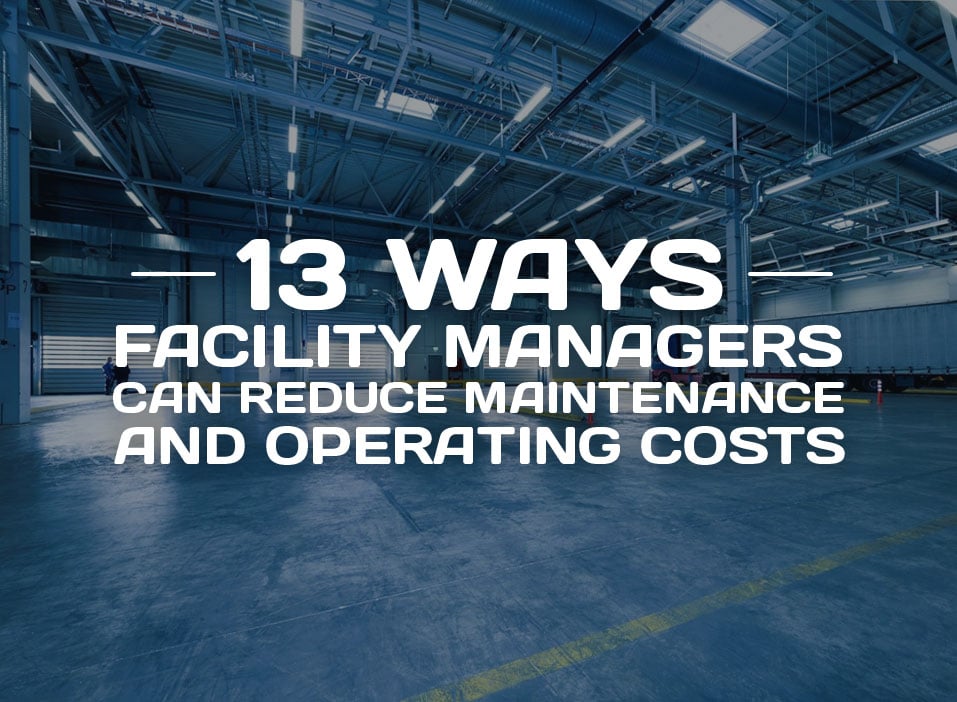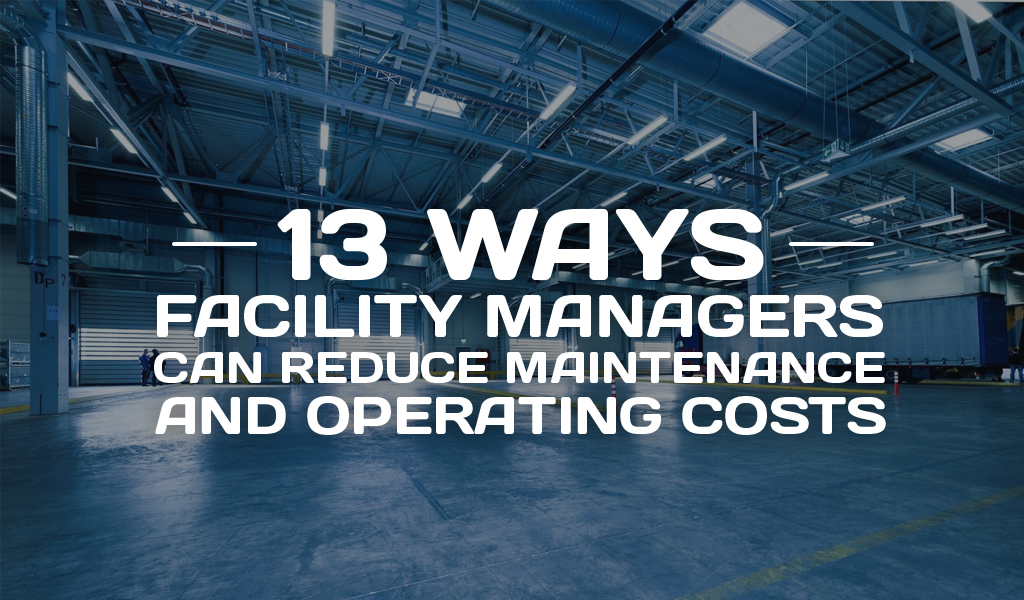
Commercial building maintenance is one expense that never goes away. However, providing quality upkeep while minimizing costs is a vital part of a facility manager’s job. How you operate your property affects your company’s business reputation, worker productivity, and ultimately, profits. Here are 13 overlooked ways to keep maintenance expenses in check.
1. Maintain Your Floors
While the average carpet life expectancy is anywhere between 20 to 40 years, carpet is often replaced at only 7 years. Aside from an outdated aesthetic, carpet is often removed because it is showing signs of wear and tear. You can extend your carpet life by grooming the fibers with a rake. This step lifts up the pile and loosens soil, making deep cleaning and vacuuming more effective. Brushing the carpet not only refreshes its appearance, but also prevents traffic patterns from developing.
2. Inspect Your Windows
Take the time to inspect all of your fenestrations on a yearly basis or after seasonal changes. Leaky windows are a source of moisture intrusion, thermal transfer, and even a pathway for pests. Ensure all weather stripping, sealing, and operating mechanisms are in good shape.
3. Look for Water Leaks
(Photo credit: Nuclear Regulatory Commission via AP)
Small leaks not only waste water but can create hidden damage under floors and behind walls. The EPA estimates that “a leaky faucet that drips at the rate of one drip per second can waste more than 3,000 gallons per year, and a shower head leaking at 10 drips per minute wastes more than 500 gallons per year.” Dripping faucets, phantom flushes, worn flappers, and loose valves, gaskets, and fittings can all waste water.
4. Resize Trash Cans
Does your cleaning staff constantly have to empty overflowing trash bins? Waste receptacles that are too small lead to trash spilling out onto the floor. This creates extra work for janitors who now have to pick up items and clean the floor. Evaluate if your restroom and break room trash cans have enough capacity to handle your daily volume of waste.
5. Add Desk-Side Recycling
(Photo credit: sustainability.ncsu.edu)
Employees are more likely to recycle items if they have a recycling bin within reach. Add a desk-side recycling bin alongside their trash can. This simple change can improve office recycling by 20%, according to a study by Keep America Beautiful. Convenient access to sorting saves maintenance staff from rescuing pop bottles and other recyclables from the regular trash.
6. Clean Your Roof
A properly maintained roof preserves structural integrity. Subject to the rays of the sun and all manner of weather, it’s important to monitor your roof for damage. Debris from trees, bird nests, and grime can block roof drains and lead to ponding water. The standing water is a prime spot for algae and biological growth to form, which can degrade the strength of your roof material. Remove debris at least twice a year. This is also the perfect time to inspect for tears, cracks, and loose flashing that need immediate attention.
7. Switch to a Salt-Free Deicer
(Photo credit: Sneller Snow Systems)
While salt deicers are common, their inherent corrosiveness can damage sidewalks, parking lots, parking garages, and even landscaping. To protect your concrete and asphalt surfaces, use chloride compounds such as calcium chloride, magnesium, calcium, potassium chloride, or calcium magnesium acetate. There are also organic-based solutions that are derived from plant sugars such as beets or sugar cane.
8. Clean HVAC Filters
Just like residential filters, commercial HVAC units need to have their filters cleaned or changed periodically. If grime and debris accumulate on the coil, it also diminishes the efficiency of the compressor motor and can decrease IAQ (indoor air quality). Replacing filters according to the manufacturer’s directions can also prolong equipment life.
9. Change Outdoor Lights to LED
Have you retrofitted your parking lot and entryway lighting with LED or HID yet? These light sources have a longer life than fluorescent and sodium vapor lamps, which means less time spent changing bulbs that are hard to reach. Light that has a blue cast also creates better nighttime visibility, which improves situational awareness.
10. Keep Landscaping Under Control
Hedges and flowering plants near your building foundation look lovely but are actually an ideal environment for pests to multiply. The plants provide a food source as well as shelter that invite insects and rodents to make a home. Trim back all existing plants and tree branches so they are not touching your exterior facade. Another option is to replace mulch with rock, which will ensure moisture penetrates the soil without providing cover for pests.
11. Switch to Green Cleaning Products
Traditional cleaning formulas can cause asthma, endocrine, and neurological issues for cleaning crews as well as occupants exposed to the residue. To ensure workers don’t suffer from health complications, avoid products with bleach, ammonia, and phthalate-based fragrances.
12. Keep a Maintenance Log
When was the last time you updated your repair log? Good maintenance records can help you trend data, like showing when upkeep costs are outpacing replacement costs or when it’s time to perform preventive maintenance. If you still keep a paper version, try a computerized maintenance management system (CMMS), which also includes inventory, work order, and invoicing capabilities.
13. Upgrade Your Drain System
Cleaning a trench drain, grating, or sloped floor is a time-consuming task. Avoid the hassle by installing a product like Slot Drain. This pre-sloped, slotted solution is an alternative to traditional grates, which can harbor germs, are unable to handle heavy traffic, and are hard to clean. Slot Drain has a clean in place kit or an optional flush feature that automatically cleans the system.
Running a facility is no simple task. The safety and efficiency of any building is dependant on the way the facility is operated. Maintenance and operating costs can fluctuate dramatically. Following these tips can help any manager reduce their costs.


